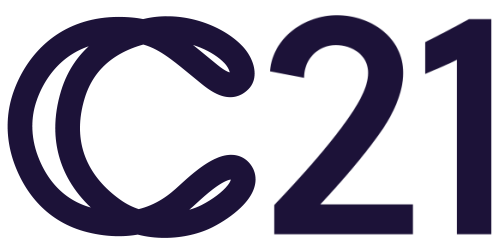This blog might read like the song ‘Everybody’s Free’ by Baz Luhrmann. You might have heard it — it’s the where the supposed experienced gentleman delivers his commencement speech to a group of graduating students. He tells them first they should wear sunscreen before detailing the valuable rules he has lived by in life. The same applies in my case; this is only my experience and knowledge I’m passing down. I’ll quote the following from the song as it sums it up perfectly…
“The rest of my advice has no basis more reliable than my own meandering experience, I will dispense this advice now.”
1. To be outstanding, you have to stand out
Once you are on the bottom rung of the ladder, you’re in. You have found the promised land. It can be a career for life; everything you’ve trained for and worked hard for. So put everything you have into getting that first step as it’s the most important thing you will do in your career. Contact the agencies you want to work at, try and get work experience. Don’t just email, put something on the desk of the Creative Director. What would you want to see? What would make you want to get you in? For example, buy a load of shoes from a charity shop, send one with a note inside ‘Just getting my shoe I the door’. If it puts a smile on the Creative Director’s face, you’re in. Follow it up with an email ‘Did you get the shoe?’, then a phone call. Be a pain in the arse, show you want it.
2. Get your face known
Once you’re in on work experience, you are a walking, talking advert for yourself. However long that work experience is, show enthusiasm, turn up on time, be inquisitive, make a few brews (most important), get talking to people, buy some cakes. That’s on the personal side. In terms of the work, give it your all. Sketch out your ideas, show you think and not just do, work up your best ideas to your best ability, take things home if you’re struggling to get things done. If you get stuck, ask for advice — these people were once where you were and know what you’re going through. Make sure you leave a good impression, make them remember you. Email to say thank you and keep in touch, because when it comes to taking on an intern, an agency will always favour someone they know.
3. Make your portfolio work harder
This could be a blog in its own right. Over the years I’ve seen many, many student portfolios. They can range from the stunning to the not-so-great, but one thing is unifying, this is your CV. I would choose someone who dropped out of Uni with no qualifications but a great, honest portfolio over a Grade A student whose portfolio is a bit ‘meh’.
So, some simple tips. Ask the person looking at your portfolio if they want you to talk it through as they might want to just flick through. If they want you to talk through it, make sure you know what you’re saying. Practice it in front of a mirror, know it by heart, but keep it short and sweet.
Don’t put anything in there that you don’t like – obvious really, but a common pitfall.
Move on — I once saw a portfolio with a beautiful piece of work, based around branding for honey — I was sold on page one, still sold on page two, by page 10 I had given up. There was only one other piece of work in there, and yet the portfolio was full. Show that an idea works across a couple of slides, then move on. No one wants to see 10 pages of logo variations. Rather 10 pages of 10 ideas than 20 pages of two ideas (no matter how great).
Try and slip something in that’s industry ready. Find out who the agencies’ clients are, see what they do for them and work up one piece of collateral based on that; a newsletter, an interactive PDF, a catalogue cover, anything to show that they could employ you today and you’d hit the ground running.
If you don’t have time for that, drop in a page or two of ‘bread and butter’ stuff… see my next point for an explanation.
4. The ‘bread and butter’ stuff
It’s great to show amazing work; the Nike website, the branding for a new fashion label and the app for a company suspiciously like Uber. All great and lovely but put some real work in there too. As above, show an emailer, a catalogue page, a report and accounts design, a poster for Dundee University, branding for an employee reward scheme. The type of thing you will be designing on day one. The Creative Director will know you can do great work, but can you do his work and make it look great? Well, show him you can.
5. Be industry ready
If you’re studying to be a Designer, it will give you a fantastic grounding in many disciplines and give you the time to develop your creativity. You should also use this time to develop your practical skills too. Get to know the Mac and the applications well as that’s going to be the basis of your career. If that’s not part of your course curriculum, then make it your personal curriculum. InDesign, illustrator, Photoshop and After Effects are going to be your colleagues for many years. Do online tutorials, try and get above the basics because having these skills will get your foot in the door because you can hit the ground running on day one. Also consider taking on some Freelance work whilst you’re studying. That type of work will test your skills in a way you might not be tested in your studies, even if it’s an unpaid job for a friend of your Mum. It will give you the experience of taking a brief, getting all the information you need and presenting your work back to someone who’s invested in the results. It’ll also prepare you for having to compromise and find the right path out of that compromise. You will be doing that all your career.
6. Back to basics
When on work placement or starting out (and all through your career really), make sure it works on paper before committing to the Mac. People will be constantly checking in on you, and if you can show them at a glance an A3 sheet full of ideas and sketches, it really helps the process. If it works on paper, then it works on screen. It’s quicker and easier to draw logo dynamics, rough web pages, brochure layouts in pen on paper. Then, once you’re happy, work them up. Also, design your logos in black and white – get the shapes working, the right fonts, the right composition and, only when you’re happy, start looking at colour options.
7. Be a sponge
You never stop learning in this industry, so be prepared to have your head filled. Never be far from a pen and paper, never go into a meeting without one. Buy a notebook and fill it. If someone gives you a nugget of information, write it down. If someone shows you how to do something, write it down. It is fine to ask how to do something and check if you are unsure. If you’re in an agency that promotes training, then get signed up to every course that will benefit your career. Always learn new skills and ways of doing things because you never can have too many strings to your bow.
8. Blank canvas
You know the deal, you get a great idea, you develop it so it grows arms and legs and three heads. You might become obsessed with it and think this is THE idea. The important thing is to walk away from it. Take it to a certain point and leave it, start all over again with a blank page. You will get other ideas and they might be better than your first idea. Plus, those other ideas might help strengthen that first idea. There will be some things you come up with that don’t go anywhere. Don’t stress, ditch them, come back to them. Things always look different with fresh eyes. The blank canvas approach is always encouraged, it flexes the brain like the muscle it is. I’ve had people on work experience who I’ve briefed to design a logo. They go away, they look industrious then after about an hour they say ‘Done it’. One option. Even if it’s a great option, it’s still only one option. I normally tell them to do another 10 totally different logos, in which there will be several better than that first logo (but only if they start with a complete blank canvas) nobody wants 20 varieties of the same logo.
9. Always give a little more
This is a good lesson in life. Be the person who you ask in the supermarket where the tinned tomatoes are, who then walks you to that aisle. Better still, be the person who suggests a better, more cost-effective tin of tomatoes to the customer. This can apply in design too. The client has given a strict brief, you do what they ask, they get what they expect. Job done. Well, how about chucking in an idea at the end about how YOU would approach the job. Everyone has thoughts about how something looks and works better when you’re producing a piece of work, so suggest it. Don’t just design five logos, also throw in a sixth wild card. Suggest a better way to display a navigation; introduce another colour, anything you can do to add value. Sometimes the client hasn’t asked for something because they can’t imagine it, you can because you’re the creative person in this scenario. So, give them a little more and it will open doors. It can also apply in life. Everyone loves someone who goes that extra mile.
10. Rinse and repeat
One day you will be in the position to offer students advice and help them get on the first rung of the ladder. When I did work experience in the 1980s, the Creative Director made me promise that when I was established in an agency to take people under my wing, give them work experience and help and advice (just as he had given me). I was only there for a week, but the industry needs new blood and also people to give them a foot up. So, when you get there, do your bit and bring on the next generation.
Oh, and also wear sunscreen.



